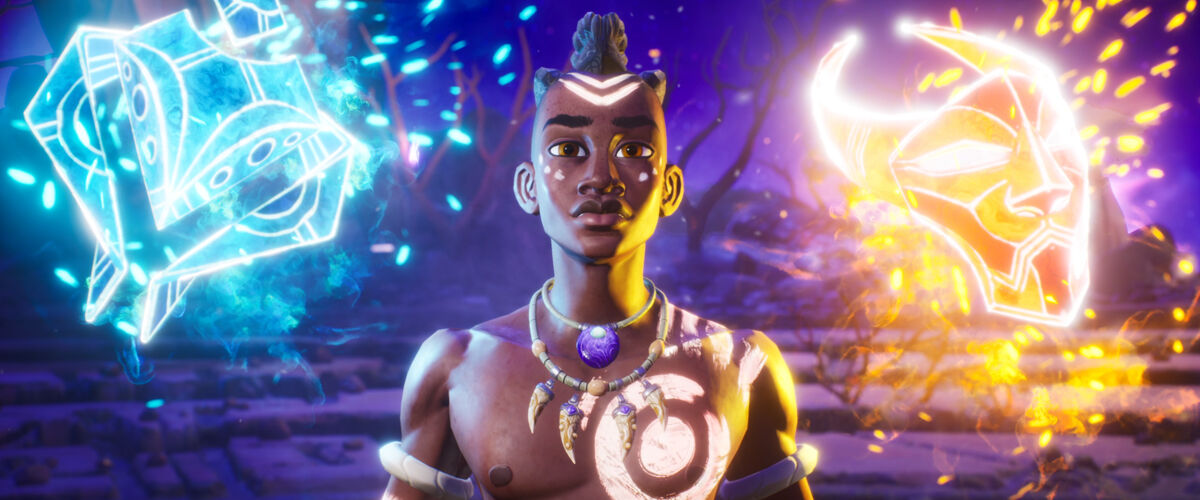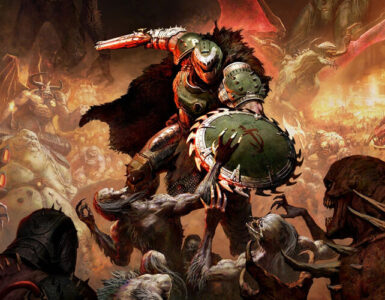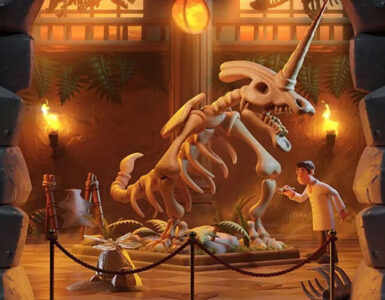Vibrant worlds, punchy colours, and a sense of vitality flow in the veins of Tales of Kenzera: Zau. The environments, dipped in rich hues, are a mesmerising sight to behold, evoking a mellow, mediative response in moments of calm, and peppered with different inhabitants – hostile or otherwise – that breathe life into them.

But it’s only when the hectic buzz of activity kicks in that the game’s thematic exploration of grief makes sense. Under a gorgeous, charming veneer lies the heartfelt tale of one of life’s many lessons, charting a man’s footsteps as he attempts to unpack and come to terms with a personal tragedy. The emotionally-fraught affair is ugly, messy, and chaotic, and the upcoming adventure seeks to spin it into a beautiful tapestry of grief, loss, and love, succeeding largely on that front.
Hailing from Surgent Studios, helmed by The Legend of Vox Machina and Assassin’s Creed Origins star Abubakar Salim, it follows Zuberi, a young man who’s grappling with the loss of his dad. While struggling to process his feelings, he stumbles upon a story written by the latter that features Zau, a shaman attempting to bring back his father’s spirit by defeating three Great Spirits with the help of Kalunga, the God of Death.
The parallels are, of course, an intentional execution that extends to other parts of the game. For one, Tales of Kenzera: Zau is based on Salim’s own experience with his father’s passing in the real world, cementing its tragedy-forged roots through a raw display of emotions by Zau/Zuberi, both of whom he voices. On a more metaphorical level, the metroidvania genre represents the labyrinth-like act of navigating through grief, where everything is confusing and uncertain, requiring players to fail, persevere, and learn how to outmaneuver obstacles – akin to the process of achieving acceptance.
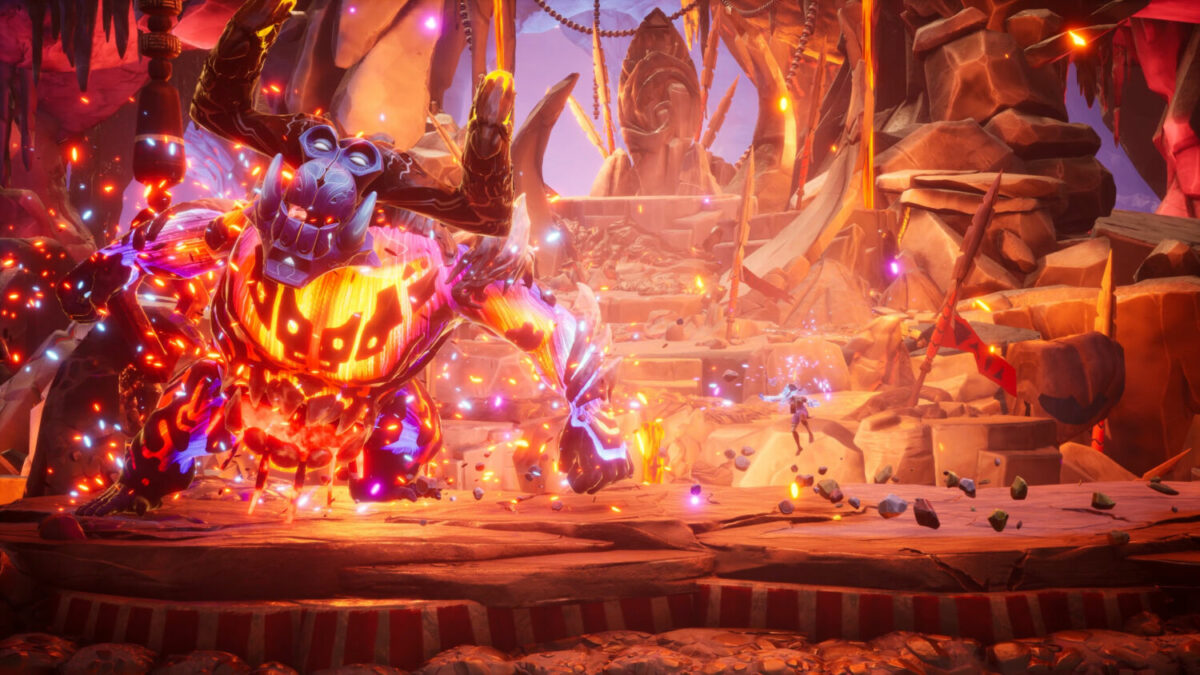
Told through four chapters, the story can hit very close to home for those who’ve been, or currently are in a similar plight. Zau is well fleshed out, with his closed-off demeanour, quick anger, and inability to look past his own pain bringing a nuanced, authentic touch to a figure often associated with healing and connecting the natural and supernatural worlds. To grief is human, the game never fails to remind, and this emotional maelstrom will accompany the character as he slowly mellows out and grows into the person he’s meant to be.
Kalunga, as the older aide, serves as the foil to his younger counterpart. The God of Death is wise where the latter is brash, offering sagely (and often cryptic) advice and encouragement when things don’t work out. Together, the pair’s dynamic feels natural, evolving from somewhat rocky beginnings – albeit one-sided on Zau’s part – and offhanded commentaries to mutual respect, which is a testament to the voice-acting prowess of Salim and Tristan D. Lalla, who plays Kalunga.
As much as Tales of Kenzera: Zau is a sincere tale of grief and loss, it’s also a celebration of African culture. The world is beautifully crafted from Bantu influences and African mythology, with baobab trees, native to mainland Africa, getting their time to shine here. The music, in similar fashion, features a refreshing blend of traditional instrumentals and synth beats, as well as powerful vocals that resembles the score from the Black Panther movie. In the quieter moments, the mellifluous tunes sound soothing and meditative to the ear, but composer Nainita Desai ramps up the adrenaline factor with quick-strumming, pulsating soundtracks in battles and boss fights.
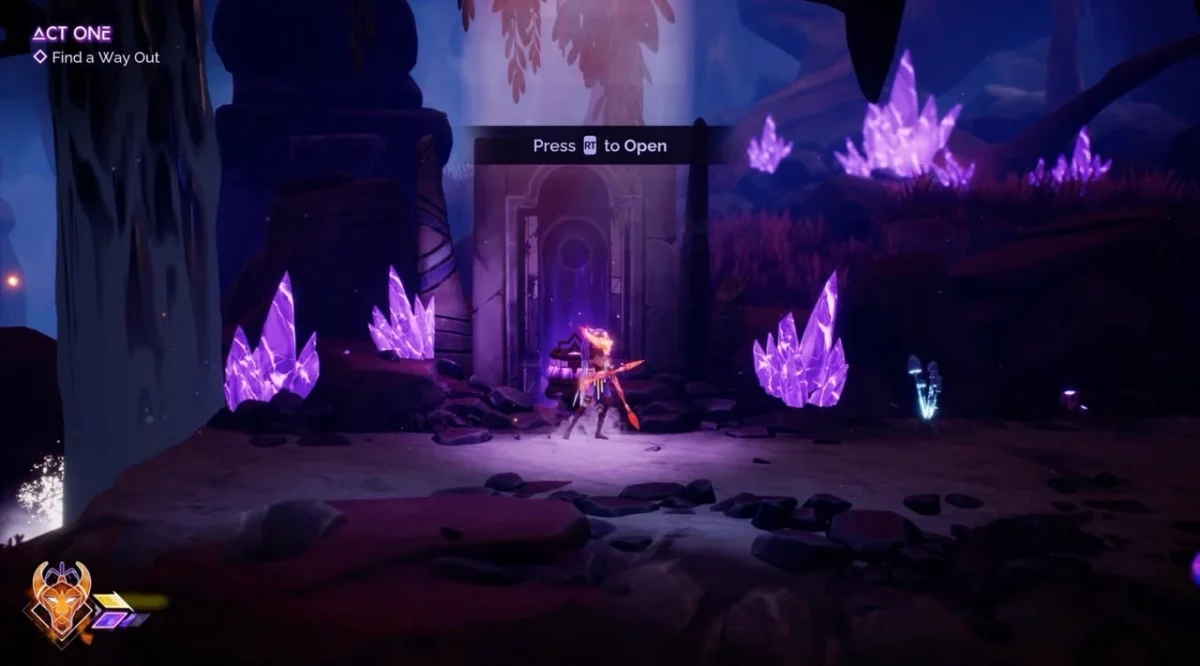
The same heart and soul carries over to combat and general gameplay. For a debut title, the platformer oozes impressive polish, allowing players to swap between the Moon Mask and Sun Mask combat styles. A unity of opposites, each brings a unique flair to the stage – the former equips Zau with ice projectiles and the ability to freeze water surfaces, while the latter focuses on close-ranged blows and throwing spear attacks.
Naturally, there are trade-offs to both. Where the Moon Mask deals lesser damage, the Sun Mask leaves players more open to taking melee and ranged strikes. There’s an attempt to balance their usability with enemy shields (a blue indicator means only Moon Mask attacks can wear it down, and the vice versa) but the overreliance on the Moon Mask seems inevitable, simply because it offers an easier control over battles, especially with flying creatures around. Keeping one’s guard up is a must, as an innocuous ill-timed jump can lead to death just as easily as a careless dodge.

In combat, all of these mechanics work together to deliver a punchy, scintillating experience. The weight of each blow gives off a crisp crunch, and the haptic feedback on the PlayStation 5 DualSense wireless controller ensures it can be keenly felt. Switching between the masks activates a blue or orange glowing effect around the rim of the touchpad, while the adaptive triggers add resistance to specific actions, such as winding up to throw a spear.
Tales of Kenzera: Zau features a skill tree system, so players are able to learn new abilities and upgrade existing ones. It does introduce some versatility, but not enough to deepen the core gameplay – even if these abilities can also be used for non-combat purposes. A nifty feature here includes a notice that informs individuals if they don’t have the required ability to progress in an area, preventing them from wasting time trying to do so. For the most part, controls are responsive, intuitive, and accessible, barring some mid-air maneuvers.
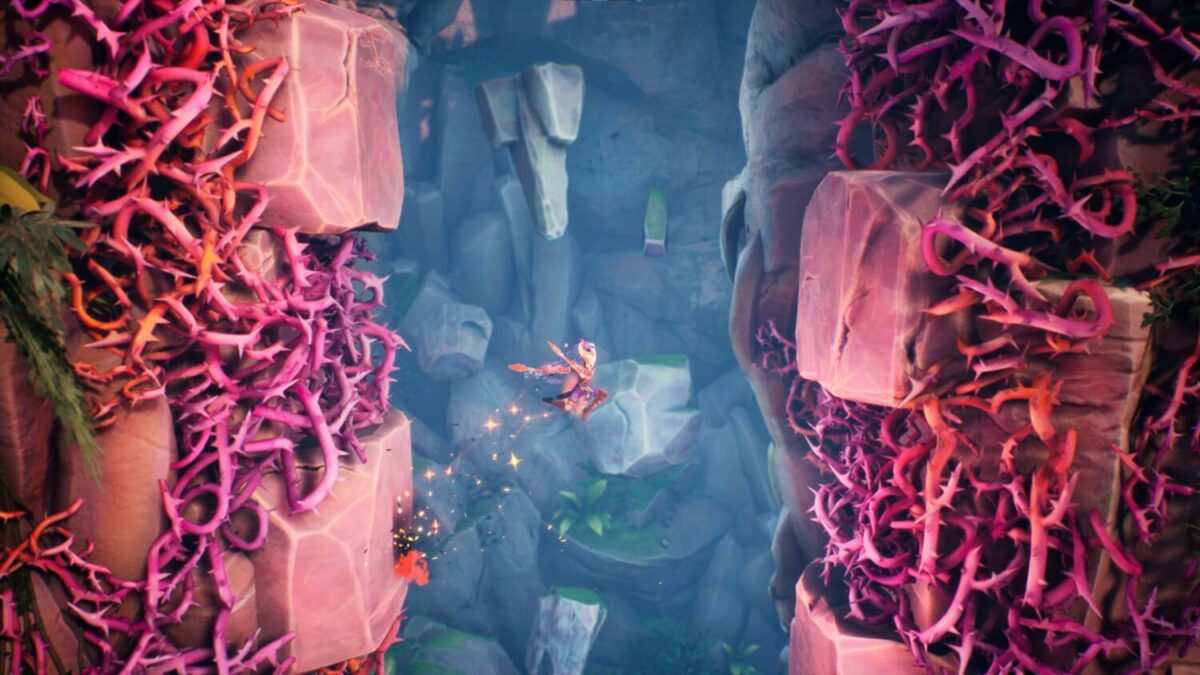
Indeed, the platforming experience is a little more flawed. Basic side-scrolling movements like dashing and double jumping prove to be smooth and satisfying, joining a host of other mechanics like hook-and-swing, gliding, propulsion, and more. Usually, there’s little to complain about navigation, until it becomes the focus of a sequence. For example, a part of the game requires players to chain three successful mid-air propulsions, but in the case of failure, there are ledges along the way that they can head for.
Here’s the catch: the walls are lined with spikes, so the landing needs to be very precise. Depending on execution, Zau may end up automatically performing a spin animation, causing him to meet a tragic demise that one has no exact control over. Such occasions are rare, but can be particularly frustrating in the midst of clearing a compulsory pathway. It doesn’t help that timed sequences are susceptible to niggling design blunders as well, because the environment backdrops – as gorgeous and detailed as they are – sometimes blend in with the foreground elements, making it difficult to see the lay of the land. And in a race against time where every second counts, this is certainly not ideal, much less in an unfamiliar terrain.
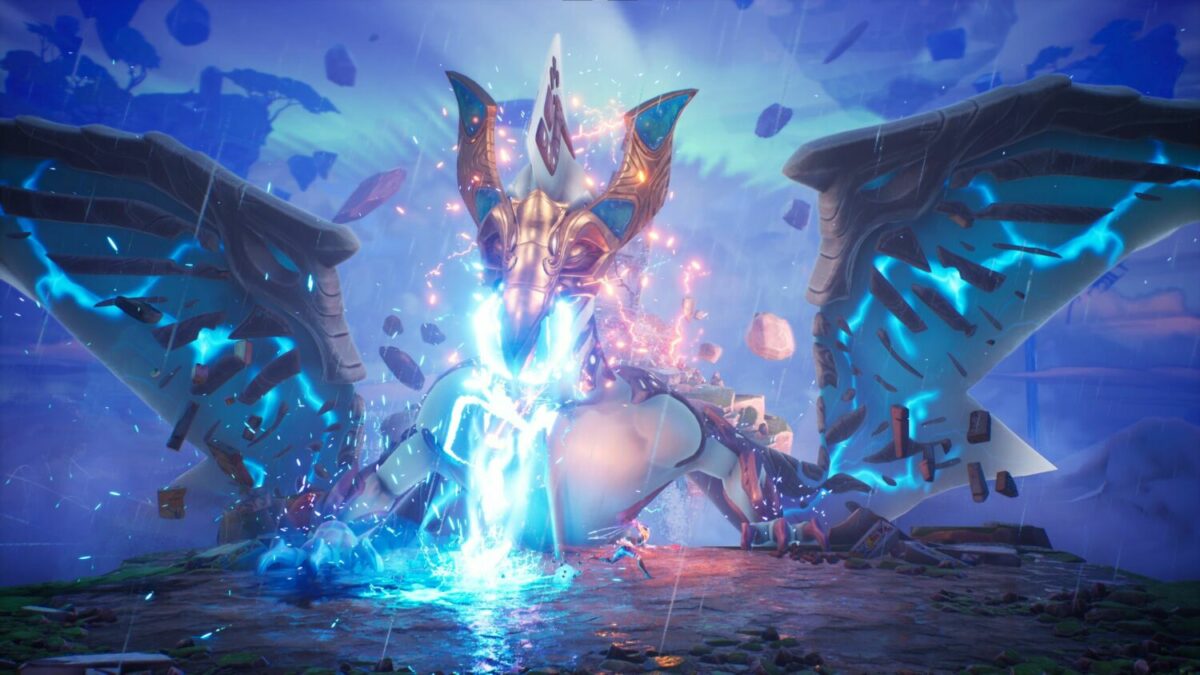
Credit has to be given where it’s due, however. Surgent Studios’ attempt to vary gameplay with time-based set pieces is commendable, even if it isn’t always easy, as it breaks the monotony of simply muscling past boss battles. Still, some of them can be shorter, considering that a boss battle lies at the end of the road.
The level design, meanwhile, proves to be a double-edged sword. Tales of Kenzera: Zau is fairly linear and does a good job with directional signposting, so genre newcomers shouldn’t find it too difficult to navigate. Unlike titles like Hollow Knight, where the map isn’t available off the bat, the game includes one that highlights objectives and places of interest from the get go, coming in handy for completionists, collecting resources, and locating hidden areas.
On the flip side, the lack of branching path means players won’t be able to progress if they get stuck at any point of the journey, which would be a real shame. Amid its slight misgivings, this sincere, stirring narrative stands proud and tall as a metroidvania darling, with its grief-tinged roots and exploration bringing a meaningful touch that separates it from the pack.
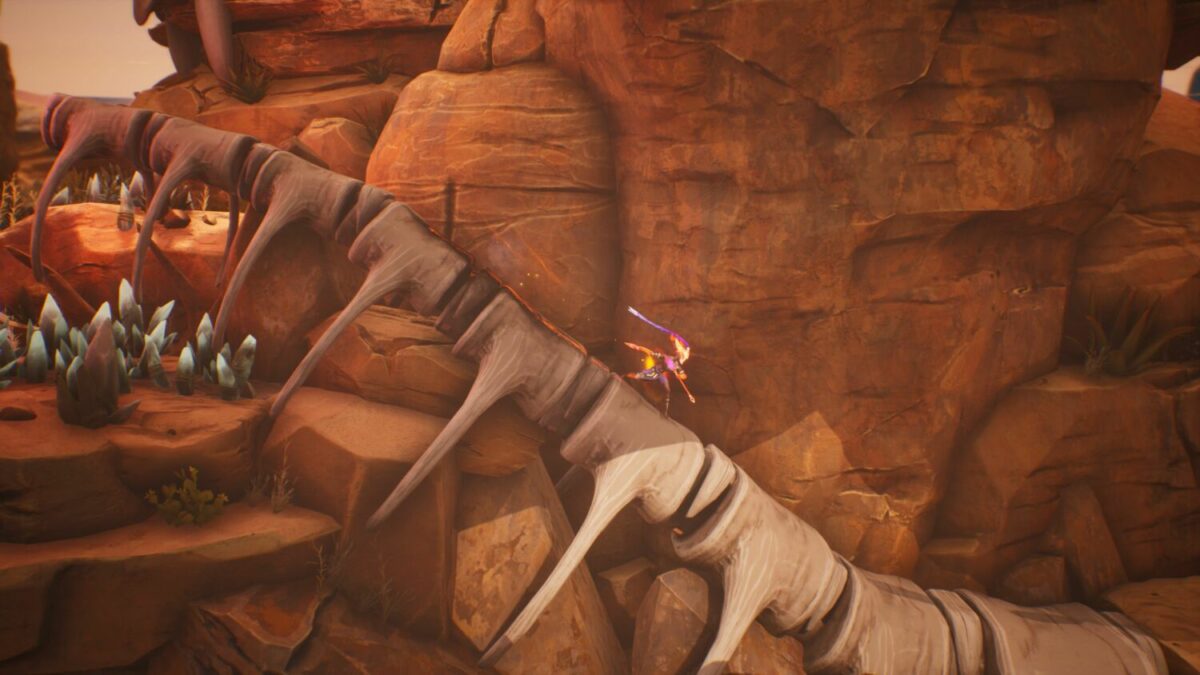
Tales of Kenzera: Zau is a lot of things – a visual spectacle, a combat sensation, a thrilling obstacle course. But at its core, the game dishes out the human reminder that it’s fine to grieve, and normal to feel lost, because while the pain may never fully go away, learning to grow around it is a personal triumph that’s worth celebrating.
Tales of Kenzera: Zau releases for Nintendo Switch, PS5, PC, and Xbox Series X|S on 23 April.
GEEK REVIEW SCORE
Summary
Tales of Kenzera: Zau combines a beautiful study in grief, loss, and love with polished 2.5D metroidvania charm, marking a strong debut for Surgent Studios.
Overall
8.4/10-
Gameplay - 8/10
8/10
-
Story - 8.5/10
8.5/10
-
Presentation - 9/10
9/10
-
Value - 8/10
8/10

